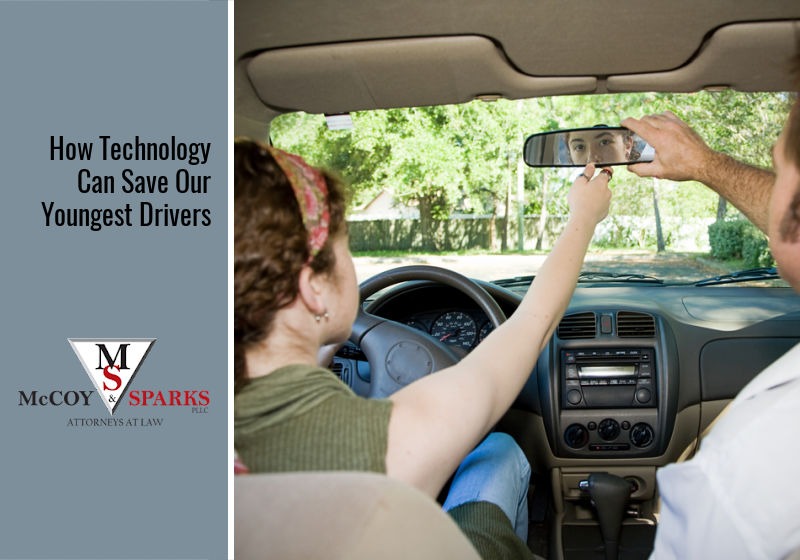
Tragically, vehicular collisions make up a significant percentage of teen injuries and deaths in the United States. According to the Center for Disease Control and Prevention (CDC), almost 2,400 teenage drivers were killed and 258,000 suffered serious injuries in 2019 alone. This is why car accident prevention is key.
Many contributing factors can cause a teen driver accident, but new car innovations can prevent certain risk factors. Although innovative safety features have not yet been widely adopted by teen and adult drivers, the future implementation of these technologies could greatly reduce the number of teen driver injuries and deaths.
In this blog, we discuss some of these exciting new safety features as well as the factors leading to the high number of teen injuries and fatalities.
Teen Car Accident Statistics
The Insurance Institute for Highway Safety (IIHS) found that teens are four times more likely to be involved in a fatal crash than drivers between the ages of 20 and 80. According to IIHS data, the leading causes of teen road fatalities are speeding, driver inexperience, and not wearing a seatbelt.
Researchers analyzed crash data in the United States from 2016 to 2019, and they found that speeding contributed to 20% of all teen driver injuries and 40% of all teen driver fatalities. Additionally, 40% of the teens that were killed in a car accident were not wearing a seat belt.
Driver inexperience is harder to quantify than speeding and not wearing a seatbelt, but teen drivers are typically worse at recognizing dangers and controlling their vehicles than older drivers. They are more likely to lose control of their cars and experience off-road wrecks. Additionally, they’re far more likely to lose focus at the wheel, and they’re less likely to reduce their speed to address slick roads or limited visibility. Accident data also indicates that teens are more likely to be involved in rear-end and right-angle crashes, meaning a crash that happens when two vehicles are traveling in perpendicular directions.
In addition to the aforementioned causes of teen driver fatalities, the CDC stated that the top eight causes of teen car accidents and injuries include:
- Driving with teen passengers in the vehicle
- Driving at night
- Distracted driving
- Drowsy driving
- Reckless driving
- Driving under the influence of drugs or alcohol
Crash Avoidance Technology and Teen Driver Safety Features
Although teen drivers are especially susceptible to making mistakes at the wheel that can cause serious accidents, all drivers have the potential to make deadly mistakes. Fortunately, automakers are now beginning to implement critical crash avoidance technology that can reduce drivers’ likelihood of causing an accident. These technologies include:
- Front crash prevention: Uses sensors evaluating upcoming traffic to warn or stop a driver from causing a rear-end collision.
- Lane departure prevention: Prevents a driver from accidentally drifting out of their lane.
- Blind-spot monitoring: Warns drivers if a vehicle is in its blind spot while they merge.
In addition to these different crash avoidance technologies, car manufacturers are also beginning to implement safety features specifically designed for teen drivers. These features send real-time alerts to parents if a teen driver is breaking curfew or speeding. This technology also reminds teens to use a seat belt.
Some of the current implementers of this technology include Ford with their MyKey feature and General Motors with their Teen Driver feature. Additionally, there are many mobile applications available that do similar functions including Hyundai’s Blue Link, Life360, AT&T DriveMode, TruMotion Family Safe Driving, and Grom Social’s MamaBear.
Car Accident Prevention: How New Technology Protects Teen Drivers
Researchers at the Insurance Institute for Highway Safety found that the crash avoidance technology and the teen driver safety functions could prevent or lessen the severity of three-fourths of fatal crashes involving teen drivers. They found that if the technology were universally implemented, it could prevent or lessen the likelihood of 41% of teen driver crashes, 47% of teen driver injuries, and 78% of teen driver deaths.
Even without the teen safety technology, the car accident prevention technology alone could greatly reduce the number of teen crashes. Based on the percentage of teen crashes caused by merging accidents and rear-end collisions, automatic emergency braking, lane departure warnings, and blind-spot monitoring can greatly increase teen safety. Lane departure warnings can prevent around 6,500 teen crashes a year, and blind-spot monitoring can prevent around 4,500. Automatic emergency braking technology can prevent 110,000 teen wrecks yearly.
The Future of Teen Safety
Although many new technological innovations can greatly increase teen driver safety, it’s unlikely that most teen drivers will have these features anytime soon. According to the Highway Loss Data Institute, only an estimated one-quarter of U.S. cars are likely to adopt crash prevention technology by 2023, and most of those drivers will be adults over the age of 25, rather than teenagers.
Another critical factor that impacts the number of teen drivers using this technology is that many people aren’t even aware of these features. Manufacturers need to do a better job informing the public of these critical safety functions so that teen drivers have better protection on the road.
In the event that you or your teenager is injured in a car accident, you may be able to recover compensation for your property damage and injuries. If you’re ready to learn more about your rights after an accident, call the Kentucky personal injury attorneys at McCoy & Sparks Attorneys at Law at 844-459-9467 or contact us online here.

